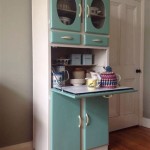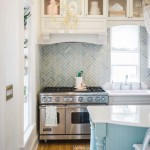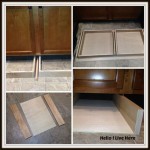Kitchen Cabinets Over Sink Window: Design, Functionality, and Considerations
The integration of a window above a kitchen sink is a common and aesthetically pleasing design choice. It provides natural light, enhances ventilation, and offers a visual connection to the outdoors. However, this design often presents a challenge: integrating kitchen cabinets while maximizing the benefits of the window. The decision of whether or not to install kitchen cabinets over the sink window requires careful consideration of several factors, including aesthetic preferences, functional needs, and spatial limitations.
The absence of upper cabinets around a sink window offers an unencumbered view and contributes to a more open and airy feel in the kitchen. The presence of cabinets, on the other hand, can provide valuable storage space, which is particularly important in smaller kitchens or in kitchens where organization is prioritized. This article will explore the various considerations and options available when deciding whether to incorporate kitchen cabinets over a sink window.
Maximizing Natural Light and Views
One of the strongest arguments against placing cabinets directly above a sink window is the potential obstruction of natural light. Natural light is a highly desirable feature in kitchens, as it brightens the space, reduces reliance on artificial lighting, and positively impacts mood and well-being. Blocking a substantial portion of the window with cabinets can significantly diminish this benefit.
Furthermore, many homeowners specifically choose a sink window location to enjoy a particular view, be it a garden, streetscape, or scenic landscape. Upper cabinets, especially those that are taller or deeper, can severely restrict or completely eliminate this view. When considering cabinets above the sink, it is crucial to evaluate the trade-off between storage and the visual benefits the window provides.
However, it's also important to consider the specific characteristics of the window itself. The size, orientation, and surrounding environment all play a role in how much light is actually transmitted. A small window facing north might not provide as much light as a large south-facing window. In such cases, the impact of upper cabinets on light levels might be less significant and the added storage could be a more justifiable trade-off. Similarly, if the view from the window is obstructed by a building or other object, the loss of that view might not be a major concern.
Storage Needs and Kitchen Space
The amount of available storage space is a critical factor in determining whether or not to install cabinets above the sink window. Kitchens often function as the central hub of a home, requiring ample space to store dishes, cookware, food items, and various kitchen gadgets. If the kitchen is small or lacks sufficient cabinet space elsewhere, integrating cabinets above the sink window might be a necessary solution to address storage deficits.
Evaluate the existing cabinet space in the kitchen and honestly assess storage requirements. Consider the frequency with which certain items are used and arrange storage accordingly. Items used frequently should be easily accessible, while less frequently used items can be stored in higher or less convenient locations. If, after careful evaluation, there is a clear need for additional storage, exploring options for cabinets above the sink window becomes a more compelling consideration.
Consider alternatives to traditional upper cabinets as well. Open shelving, for example, can provide some storage while maintaining a more open feel and allowing more light to penetrate. Floating shelves are another option that offers a minimalist aesthetic and can be used to display decorative items or store frequently used items like spices or coffee mugs. These alternatives can strike a balance between storage needs and the desire for a bright and airy kitchen space.
Design Alternatives and Cabinet Configurations
If the decision is made to incorporate cabinets above the sink window, there are various design alternatives that can mitigate the potential drawbacks of blocking light and views. The height of the cabinets is a critical consideration. Instead of running the cabinets all the way up to the ceiling, consider installing shorter cabinets that leave a clear space above the window. This allows more light to penetrate into the kitchen and maintains some visibility of the view outside.
The depth of the cabinets is another important factor. Shallower cabinets, sometimes referred to as "pantry cabinets," are less intrusive and block less light than standard-depth cabinets. These cabinets may not be suitable for storing large items, but they can be ideal for storing spices, canned goods, or other smaller items.
Another design option is to use glass-front cabinets. Glass doors allow light to pass through the cabinets, creating a brighter and more open feel. Consider using clear glass to maximize light transmission or frosted glass to provide some privacy while still allowing light to filter through. The items stored inside glass-front cabinets will be visible, so consider using this type of cabinet to display attractive dishes or decorative items.
A bridge cabinet, a single cabinet that spans the width of the sink window, is another popular design choice. This approach allows for some storage without completely enclosing the window. The height and depth of the bridge cabinet should be carefully considered to minimize obstruction of light and views. A shallow bridge cabinet with a light-colored finish can be an effective way to add storage without sacrificing too much natural light.
Finally, consider the hardware used on the cabinets. Polished chrome or brushed nickel hardware can reflect light and contribute to a brighter and more modern look. Recessed or minimalist hardware can create a cleaner and less obtrusive appearance, while decorative hardware can add personality and character to the kitchen design.
Selecting the right kitchen cabinets for over a sink window involves careful consideration of factors such as the size and orientation of the window, the overall kitchen design, storage requirements, and personal preferences. By carefully weighing these factors, homeowners can make informed decisions that maximize the functionality and aesthetic appeal of their kitchens.
Ultimately, the decision of whether or not to install kitchen cabinets over the sink window is a highly personal one. There is no single "right" answer, and the best solution will depend on the specific needs and preferences of the homeowner. By carefully evaluating the pros and cons of different options and considering the design alternatives available, homeowners can create a kitchen that is both functional and visually appealing.

Kitchen Windows Over Sink 25 Design Decor Ideas Window

Cliq Design Cabinets Over Window Kasper Kitchen Above Sink Remodel Small

How To Run Kitchen Cabinets Across A Low Window The Leslie Style

Cabinets Over Kitchen Sink Cottage Bhg

Design Ideas For Kitchen Sink Windows Innotech Doors

My Kitchen Remodel Windows Flush With Counter The Inspired Room
:strip_icc()/101660611-c8ffef0844e44c2f9790c4dac714ae32.jpg?strip=all)
16 Ideas For Decorating Above Kitchen Cabinets

Ivory Kitchen Cabinets With Farm Sink And Louvered Window Shutters Transitional

Those Pesky Little Kitchen Windows And How To Make Them Look Bigger Designed

Kitchen Window Treatments For Over The Sink Shademonster
Related Posts








